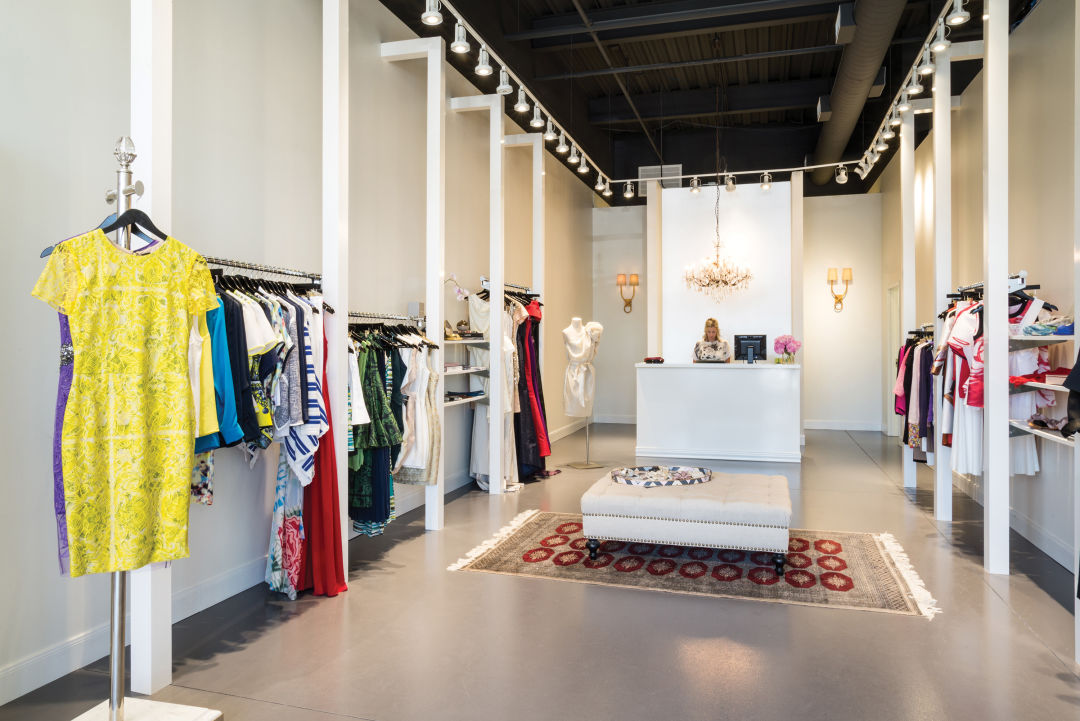Discover the most up to date Trends in Boutique Fashion for every single Period
Discover the most up to date Trends in Boutique Fashion for every single Period
Blog Article
Lasting Fashion: How Eco-Friendly Clothing Is Shaping the Future of Style
As the style market encounters enhancing scrutiny over its ecological influence, the rise of sustainable fashion uses an encouraging choice that lines up style with ecological obligation. Utilizing innovative materials such as recycled fibers and plant-based fabrics, alongside advanced approaches like digital and 3D printing, developers are redefining what it suggests to be trendy in the modern age. Simultaneously, the expanding appeal of upcycling and second hand society is cultivating a shift in the direction of a circular economic climate. How does this activity truly influence the future trajectory of fashion, and what difficulties lie ahead in its prevalent fostering?
Ingenious Lasting Products
As the style industry grapples with its ecological influence, cutting-edge sustainable materials have arised as an essential option for decreasing ecological footprints. These materials not just lower dependency on fossil fuels however likewise lessen unsafe pesticide usage and water consumption.
In enhancement to plant-based products, advancements in biofabrication have brought about the advancement of lab-grown textiles. Mycelium leather, originated from mushroom roots, provides a versatile and eco-friendly alternative to animal natural leather. Its manufacturing results in substantially lower carbon exhausts and water usage, making it an extra sustainable option for style designers looking for to straighten with environmentally friendly techniques.
Recycled products are additionally obtaining grip, with polyester made from recycled plastic bottles standing for a considerable innovation. This development not only draws away plastic waste from landfills and oceans but additionally reduces energy usage contrasted to creating virgin polyester. With each other, these products underscore the possibility for a more lasting apparel industry, leading the way for environmentally aware design and production.
Eco-Conscious Production
Building on the technologies in sustainable materials, the fashion sector is additionally re-evaluating its manufacturing processes to further minimize environmental effect. Trick methods consist of minimizing water usage, reducing carbon discharges, and removing unsafe chemicals.
One more important facet is the decrease of poisonous chemicals commonly made use of in dyeing and finishing textiles. Eco-conscious manufacturers are moving towards plant-based dyes and waterless dyeing innovations, which not only secure regional environments however likewise enhance employee security. Technologies like electronic printing lower material waste and energy consumption, supplying a cleaner option to conventional approaches.
Furthermore, transparency and traceability have actually come to be extremely important. With the development of blockchain innovation, business can currently supply in-depth insights into their supply chains, ensuring ethical and eco-friendly practices at each action. This openness develops customer trust and encourages brand names to maintain high sustainability standards. As the demand for eco-conscious products expands, makers are urged to innovate, guaranteeing that the future of style is both sustainable and stylish.
The Rise of Upcycling
Upcycling, a transformative method in lasting style, entails artistically repurposing discarded materials into new, high-grade products. This innovative approach not just decreases waste yet additionally reduces the need for basic materials, thus lessening the ecological influence of clothing manufacturing. By reimagining and reconstructing existing things, designers and fashion brand names are able to infuse creativity into their collections while advertising environmental responsibility.

Furthermore, the upcycling activity has encouraged local business and independent designers, who usually lead in innovation due to their dexterity and creativity. By taking advantage of the bountiful accessibility of extra materials, these entities add to a round economy, demonstrating that style can be both trendy and sustainable. Through upcycling, the industry takes substantial strides towards an extra mindful and accountable future.
Thrift Culture's Effect
The growing second hand culture significantly improves the landscape of lasting style, stressing the value of mindful intake. This cultural change motivates consumers to accept previously owned apparel, consequently decreasing the demand for new garment manufacturing and reducing environmental influence. Second hand shopping not just prolongs the lifecycle of apparel yet also lowers the carbon footprint connected with production, transporting, and getting rid of clothing.
A crucial aspect of second hand basics society is its democratization of style. By supplying a wide variety of designs from various periods at economical rates, thrift stores make style obtainable to a wider target market. This access fosters a sense of individuality and creative thinking, as customers mix and suit distinct pieces to curate tailored closets without contributing to the rapid style cycle.
Additionally, second hand society advertises circularity in fashion, straightening with the principles of a circular economy. By recirculating garments, the cycle of waste is disrupted, and sources are conserved. This practice supports a change from a direct "take-make-dispose" version to a much more lasting structure. As more developers and consumers welcome thrift society, the apparel industry is urged to adapt, incorporating sustainable methods to fulfill the growing demand for eco-conscious options.

Future Trends in vogue
Fashion's advancement is progressively formed by sustainability-driven initiatives and technological innovations. One famous fad is the rise of electronic style, where virtual garments can be used in enhanced truth atmospheres, considerably lowering fabric waste.
Furthermore, the assimilation of blockchain modern technology provides new opportunities in openness and traceability, allowing consumers to validate the sustainability credentials of their clothes. boutique fashion. This makes certain responsibility in supply chains and advertises ethical sourcing methods. 3D printing is yet another innovation that guarantees to revolutionize producing procedures by allowing on-demand manufacturing, thus lowering excess supply and waste
As these innovations grow, they are positioned to change the style landscape, merging design with sustainability. The future have a peek at this website of style, as a result, exists in a seamless mix of innovation, technology, and eco-friendly obligation.
Conclusion
The change of the fashion sector with lasting techniques indicates an essential change in the direction of environmental liability. This evolution not just straightens fashion with eco-friendly sustainability however also sets a criterion for future trends focused on obligation and innovation.
As the fashion sector encounters increasing examination over its ecological impact, the surge of sustainable style offers a promising option that aligns style with eco-friendly responsibility.As the style sector grapples with its environmental influence, cutting-edge sustainable materials have emerged as an essential solution for reducing environmental footprints. With each other, these materials highlight the possibility for an extra lasting fashion sector, paving the means for environmentally conscious design and manufacturing.
Building on the innovations in sustainable materials, the style market is additionally re-evaluating its manufacturing processes to further reduce ecological influence. boutique fashion.Upcycling, a transformative method in sustainable style, entails creatively repurposing thrown out products right into brand-new, high-quality items
Report this page